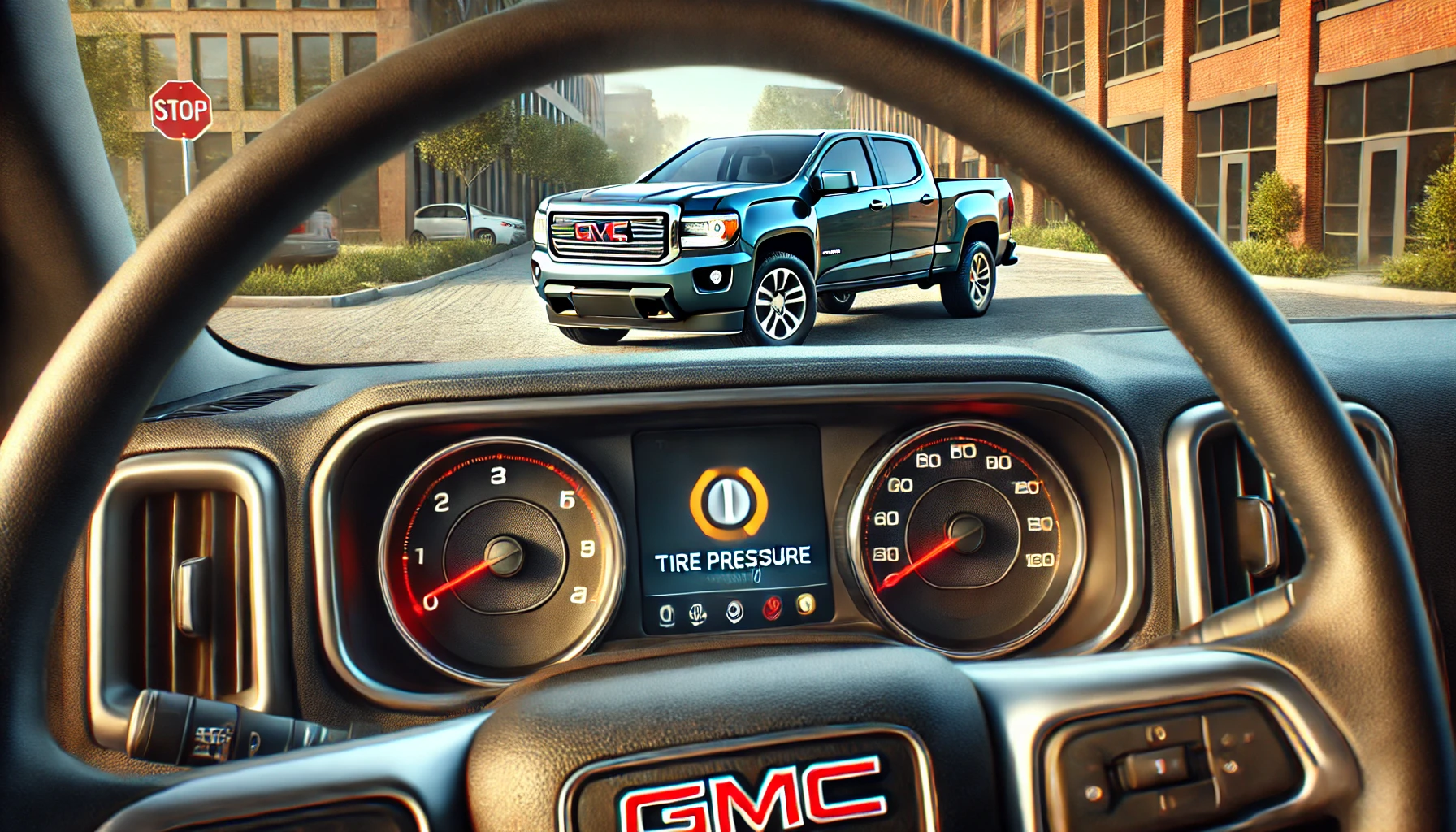
- Low Tire Pressure: The most common cause is simply low air pressure. Temperature changes can also impact pressure, so the system may send a false alert in very cold or hot conditions.
- Faulty TPMS Sensor: Each sensor has a battery that eventually dies, usually after 5–10 years. If a sensor’s battery is low or malfunctioning, it will need replacing.
- Signal Interference or Software Glitch: The TPMS uses radio signals to communicate with the car’s computer. Signal interference or even software glitches in the TPMS module can also trigger errors.
- Recent Tire Rotation or Replacement: If you’ve recently rotated, replaced, or repaired tires, the system may need recalibration or a reset.
2. Step-by-Step Guide to Resolving TPMS Issues on a GMC Canyon
Step 1: Check All Tire Pressures Manually
Start by manually checking each tire’s air pressure, including the spare if equipped with a sensor. Make sure all tires are inflated to the recommended pressure level (often noted on the driver’s door or in the user manual).
Step 2: Perform a TPMS Reset
Here’s how to reset the TPMS in a GMC Canyon:
- Turn the ignition to the ON position (do not start the engine).
- Press the “INFO” button on the dashboard until you see “Tire Pressure” displayed.
- Hold the “SET/RESET” button until you see the message “Tire Learning Active” on the display.
- Starting with the left front tire, release air until you hear the horn beep. This confirms that the sensor has been registered.
- Move clockwise to the right front, right rear, and then left rear tires, repeating the process until each tire has been registered.
- Once complete, turn off the ignition. This should reset the TPMS.
Step 3: Drive the Vehicle
Sometimes, simply driving the GMC Canyon for about 10 minutes at speeds above 25 mph will recalibrate the sensors, allowing the system to reset automatically.
Step 4: Scan for Fault Codes (if the issue persists)
If the TPMS light remains on or frequently turns on and off, a more in-depth check may be necessary. A diagnostic scan tool, available at many auto shops or dealerships, can read the fault codes and pinpoint specific sensor or module issues.
3. When to Replace a Faulty TPMS Sensor
If one or more sensors are non-responsive after these steps, replacement might be required. TPMS sensors are designed to last but will eventually need to be replaced if their battery dies or if the sensor itself is faulty. Replacements can usually be done at a dealership or certified tire shop.
4. Preventative Maintenance Tips
- Check Tire Pressure Monthly: This reduces TPMS wear and helps avoid under-inflation.
- Seasonal Adjustments: With temperature changes, especially in winter, double-check tire pressure to keep TPMS alerts at bay.
- Battery Maintenance: If your Canyon is older, TPMS batteries may need replacement, especially if alerts appear sporadically or during long drives.
